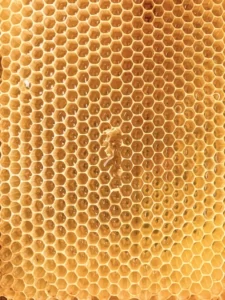Table of Contents
What is MGO? Everything You Need to Know
Introduction
MGO, short for methylglyoxal, is a natural compound found in high levels in Manuka honey. It is one of the key factors that gives Manuka honey its unique healing properties. In this article, we will explore what MGO is, how it is measured, and its significance in the world of Manuka honey.
What is MGO?
MGO, also known as methylglyoxal, is an organic compound that is found in various foods and plants. It is a naturally occurring substance that is formed as a byproduct of certain metabolic processes in living organisms.
How is MGO Measured?
The level of MGO in Manuka honey is measured using a rating system known as the Unique Manuka Factor (UMF). This system is used to determine the potency and quality of Manuka honey. The UMF rating is based on the concentration of MGO in the honey.
The Significance of MGO in Manuka Honey
MGO is one of the main compounds responsible for the antibacterial properties of Manuka honey. It is believed to have powerful antimicrobial effects, making it effective in treating wounds, infections, and other health conditions.
MGO has been found to be highly effective against a wide range of bacteria, including MRSA (Methicillin-resistant Staphylococcus aureus) and E.coli. This makes it a valuable natural remedy for various ailments.
How Does MGO Work?
MGO works by disrupting the cell membranes of bacteria, causing them to lose their structural integrity and ultimately leading to their death. It also has anti-inflammatory properties, which can help reduce swelling and promote healing.
The Importance of MGO in Manuka Honey
Manuka honey is known for its powerful antibacterial properties, and MGO is one of the main compounds responsible for this. The higher the concentration of MGO in Manuka honey, the stronger its antibacterial effects.
MGO vs. UMF: What’s the Difference?
While MGO is a specific compound found in Manuka honey, UMF is a rating system used to measure the concentration of MGO in the honey. UMF takes into account other compounds as well, such as DHA (dihydroxyacetone) and Leptosperin. So, while MGO is an important factor, it is not the only one that determines the quality and potency of Manuka honey.
How to Choose the Right MGO Level
When choosing Manuka honey, it is important to consider the MGO level. The higher the MGO level, the stronger the antibacterial properties of the honey. However, higher MGO levels also mean higher prices. It is recommended to choose a honey with a minimum MGO level of 100+ for therapeutic use.
Other Uses of MGO
Apart from its medicinal uses, MGO has also found applications in other industries. It is used in the production of adhesives, plastics, and even as a food preservative. MGO has unique chemical properties that make it useful in various fields.
Conclusion
MGO, or methylglyoxal, is a natural compound found in Manuka honey. It is responsible for the honey’s powerful antibacterial properties. The level of MGO in Manuka honey is measured using the UMF rating system. Higher levels of MGO indicate stronger antibacterial effects. MGO works by disrupting the cell membranes of bacteria, causing their death. It is used not only in medicine but also in other industries. When choosing Manuka honey, it is important to consider the MGO level to ensure its potency. Overall, MGO is a valuable compound that contributes to the unique healing properties of Manuka honey.



